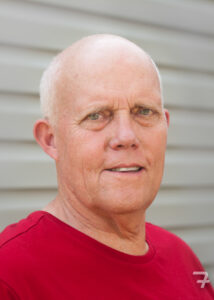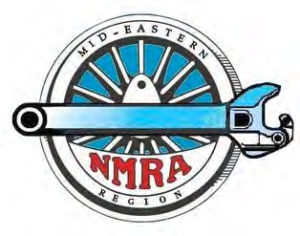Submitted by Clerk Harvey Heyser
Division members met remotely on the internet using the Zoom platform. 18 or so were present. The Superintendent convened the meeting prior to the published start time to allow for any attendees having trouble with the Zoom connection time to try logging in multiple times. After some socializing, Superintendent Jerry Skeim called the business meeting to order shortly after the 2 pm start time.
20.12-1 Paymaster’s Report: Paymaster Ray Price reported that the Division has $3781.32 in its bank account. That amount includes disbursements for the Winter Wheel Report and $16.42 for brochure holders.
In response to questions about NMRA and MER distributions, the Paymaster explained those checks are now sent directly to him (one at the end of August and one in September).
20.12-2 Clerk’s Report (Meeting Minutes): The attendees dispensed with the reading/summary of the minutes (previously distributed by e-mail). Clerk Harvey Heyser read the following clarification received from Web Master Tom Fedor regarding items in the November draft minutes concerning the web site, the blog, and SMD’s Facebook page:
Website/Blog: The Division has one official website. It is smdnmra.org. Our website is the SMD blog. All members should look to smdnmra.org for news, features, and information from Division officials. There could also be news from Region and National officials shared on our blog. I recommend that all SMD members visit frequently, and subscribe to smdnmra.org to receive notifications of official posts on the Division home page.
Facebook Page: The Division also has a social media account on Facebook.com. While the Facebook page is a private site, membership is not restricted to SMD members. If a person demonstrates a genuine interest in our Division or has connections to people in our Division, access to the Facebook content can be granted by the SMD moderators. The Facebook page is a place for those who join to freely share and communicate directly with each other on any topic related to railroading.
To expedite the wording of a somewhat complicated motion, Clerk Heyser made the following motion (seconded by Alex Polimeni):
Motion: That the draft Minutes for the November 2020 meeting be approved as submitted, with the above clarification included in the December minutes. The motion passed unanimously.
WebMaster Fedor’s recommendation that all SMD members join the Division’s Facebook group was also noted.
Old Business:
20.10-4 2021 Mini-Con: In response to questions from attendees, the Superintendent and Chair Pete Clarke repeated the reasons for not holding a Mini-Con in April 2021 (the main reason being the likelihood of being stuck in the pandemic through the spring of 2021). Holding the virtual raffle (see the following minute) will serve to remind area modelers of the future 2022 Mini-Con.
20.10-7 Virtual Raffle: Brian Wolfe has offered to donate a $100 gift card. Bill Martz has forwarded information on what has to be done to conduct a virtual raffle. Bob Morningstar reported there are web sites that can help with the raffle. (He volunteered to help.) The Superintendent will confer with the Advisory Committee and report back in the new year.
20.10-8 Brochures: Bob Johnson reported on the locations he has placed the brochures (Main Line and HobbyTown (and a few more where he plans to place them – the Train Room – Hagerstown – the hobby shop in Mt. Airy, and the Train/Vehicle Museum – Frederick). Members who have other suggestions should contact Bob or Jerry Skeim.
New Business:
20.12-3 Holiday Cards: Alex Polimeni suggested sending actual, USPS-mailed cards to all members as a tangible indication that the SMD is still functioning and that we still value their participation. He shared a link to a card web site and suggested the card of a PRR Altoona to Cumberland train arriving at a depot on a snowy evening in the 1920s (99 cents per card). He indicated that he has the addresses and could get them out quickly. The Superintendent will consider a message insert about SMD activities in the coming year.
Bob Johnson made the following motion (seconded by Ron Polimeni):
Motion: To authorize an expenditure not to exceed $175 for sending holiday cards to the members. The motion passed unanimously.
20.12-4 Staying Engaged: Bob Morningstar suggested bringing projects to the Zoom meetings (making meetings more model-centric) through electronic sharing: using the screen share function of Zoom, short videos (such as Dave Thalman’s layout visit/clinic at the October meeting), and even PowerPoint slide presentations. Members mentioned the Op Sig’s Second Section meetings held each month in addition to their regular meetings and the Hindsight 2020 RPM all-day meet (posted on YouTube). The discussion concluded with a decision to consider additional SMD virtual activities – a second get-together each month (perhaps on a different day of the week).
20.12-5 NMRA Virtual Events: The NMRAx events seem to be organized largely by volunteer effort.
20.12-6 Regional Events: Planning for the in-person fall 2021 MER Convention at Hunt Valley is proceeding. Bob Morningstar cautioned that the event may have to be virtual.
Adjournment: The Superintendent accepted a motion to adjourn. The next meeting will be held remotely in January 2021 (second Sunday at 2 p.m.). Members will be notified by e-mail.
Following the meeting, Bob Morningstar presented a clinic introduction to JMRI, a free tool to aid hobbyists in the enjoyment of all of the sophisticated electronic features of products produced for model railroading. Bob serves as a beta-tester for new versions of JMRI (released at approximately 6-month intervals) and offered to assist SMD members in setting the program up. He also emphasized that JMRI is modular and that you do not have to use all of it.


